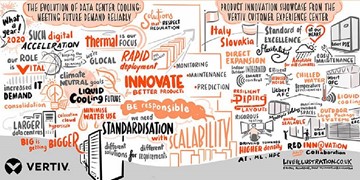Liquid Cooling: A Greater Strategy for Thermal Management
As organizations pursue more high-performance computing (HPC) applications and data centers get bigger, air cooling alone won’t be an effective thermal management strategy for these elevated heat loads. Liquid cooling is an alternative approach that offers incredible and effective performance with a visual appeal while keeping your equipment within optimal operating temperatures.
How Does Liquid Cooling Work?
Liquid cooling systems circulate liquid through a “water block,” which is essentially the water-cooling equivalent of a heatsink—the cooler liquid circulating through the water block pools the heat away from the chip, cooling it. To help improve heat transfer properties, thermal paste and a baseplate rest between the water block and CPU. Heated fluid is then pumped to the radiator, where fans expose it to cold air. The now chilled liquid is returned to the water block to be heated, and the cycle repeats.
Benefits of Liquid Cooling
Improved IT Reliability and Performance
Deploying a liquid cooling system will deliver reliability and further IT performance benefits. Liquid cooling allows densely packed systems to operate continuously at their maximum voltage and clock frequency while avoiding overheating.
Improved Energy Efficiency
By eliminating the fans required to move air across the data center and through servers, and the higher thermal transfer properties of liquid cooling, allows for significant energy savings. The pumps required for liquid cooling consume less power than the fans needed to accomplish the same cooling.
Sustainability
Liquid cooling allows more opportunities to reduce data center energy consumption and drive down power usage effectiveness (PUE); it also provides a more effective approach for re-purposing captured heat to reduce the demand on building heating systems.
Maximize Space Utilization
The density enabled by liquid cooling allows a facility to use existing data center space better, eliminating the need for expansions or new construction, or to build smaller-footprint facilities. It also enables processing-intensive edge applications to be supported where physical space is limited.
Lower Cost of Ownership
The American Society of Heating, Refrigerating and Air-Conditioning Engineers (ASHRAE) conducted a detailed cost of ownership analysis of air-cooled data centers versus a hybrid model air- and liquid-cooled data center. They found that, while several variables can influence the total cost of ownership (TCO), “liquid cooling creates the possibility for improved TCO through higher density, increased use of free cooling, improved performance, and improved performance per watt.”
Deploying Liquid Cooling in Your Facility
Are you ready to increase your data center cooling capacity and efficiency? Contact us for more information on liquid cooling solutions.

